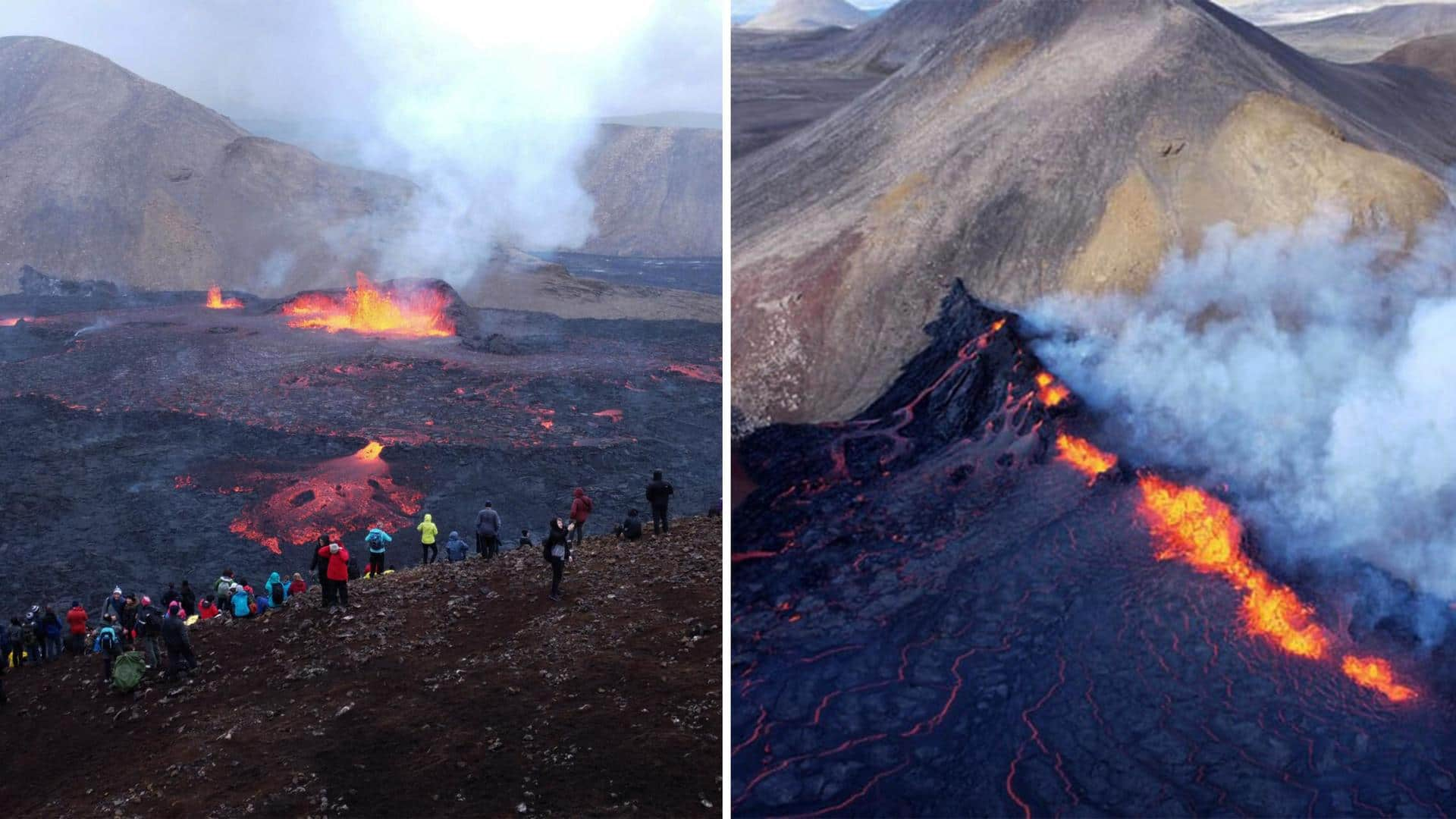
Iceland recorded 2,200 earthquakes in 24 hours, raising eruption concerns
What's the story
On Wednesday, Iceland's weather office stated that in the last 24 hours, around 2,200 earthquakes were recorded in the vicinity of Reykjavik, the capital city. The tremors started around 4:00 pm beneath Mount Fagradalsfjall on the Reykjanes Peninsula, Iceland's southwestern tip, where two eruptions have occurred in the past two years. This substantial seismic activity strongly suggests the potential for an imminent volcanic eruption.
Magnitude
Seven of the quakes had a magnitude over four
"Around 2,200 earthquakes have been detected and the largest earthquakes have been felt in the Southwest part of Iceland," said The Icelandic Meteorological Office (IMO) in a statement. They further added that it was highly likely for the seismic activity to continue. The agency mentioned that among the recorded quakes, seven had a magnitude exceeding four, which is classified as a light quake.
Cancelled flights
Aviation color code raised to 'orange'
In response to the seismic activity, IMO raised the aviation alert level from "green" to "orange." Orange indicates that an eruption is likely or is occurring with no/minor ash. The eruption of the Eyjafjallajokull volcano in April 2010 serves as a reminder of the potential impact, as it resulted in the cancellation of around 100,000 flights and left over 10 million travelers stranded.
Aviation codes
Aviation color code system
The Aviation color code system uses four levels: green, yellow, orange, and red, indicating normal conditions to high risk respectively. In recent years, the Aviation color code has been adjusted multiple times for certain volcanoes in Iceland. The most recent case where the color code was raised to orange/red was during the last eruption in Bárðarbunga in 2014-15.
Natural wonder
Iceland's volcanic landscape
Iceland is the biggest and most active volcanic region in Europe. It is located on the Mid-Atlantic Ridge, which is a large geological formation separating the Eurasian and North American tectonic plates. The continuous movement of these plates causes frequent volcanic eruptions in the country. This creates a fascinating but unpredictable natural environment, making Iceland a unique and captivating destination.
Dual nature
A natural wonder and a potential threat
The mesmerizing sight of an active volcano attracts a large number of visitors, as seen during the recent eruptions near Mount Fagradalsfjall in 2021 and 2022. However, it is essential to understand the dual nature of this phenomenon. On one hand, it displays the awe-inspiring beauty of nature, and simultaneously, it poses a potential risk to both people's safety and man-made infrastructure.